In the shadow of the Big Cosmos
It is widely known that the launch of the first satellite by the Soviet Union was a big surprise for the whole world. And if the human-made object was in orbit for the first time, various space vehicles already existed in outer space. Geophysical rockets did not receive the same glory as the space rockets, but they were the ones who prepared engineers and scientists for orbital launches. After October 4, 1957, suborbital flights did not stop — geophysical rockets were launched in the shadow of orbital flights. And now, in general, we can say that we are witnessing a renaissance of geophysical rockets - private companies make not only orbital rockets, but also suborbital rockets and quite successfully find commercial customers for launches.
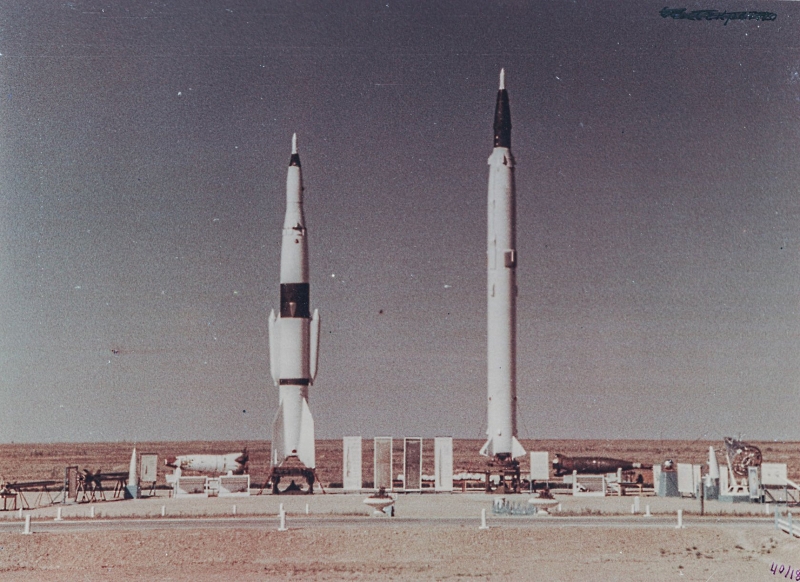
Soviet geophysical missiles R-2A and R-5A
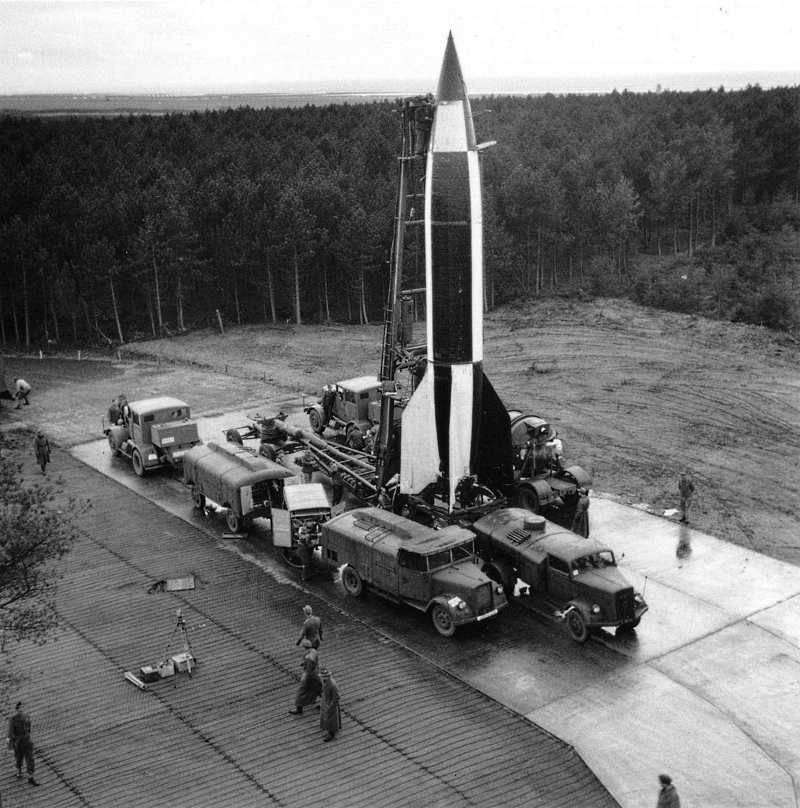
V-2, archival photo
On the border of space, the first object appeared in 1942, and this was a side effect of military tests. In a regular flight, the German combat ballistic missile "V-2" flew up to 320 km, while rising to an altitude of 80-100 km. And already at the first successful launch on October 3, 1942, the rocket reached an altitude of 85-90 km. The formal boundary of the cosmos, the Karman line, passes above, at the level of 100 km, but this is not a matter of principle - one can only climb such a height on a rocket. In addition, several times "V-2" launched vertically upwards. Theoretically, the fuel supply was enough to rise to about 200 km, and different sources cite the different heights achieved (175, 188 km) and different test dates (June 20, 1944, September 14, 1944).
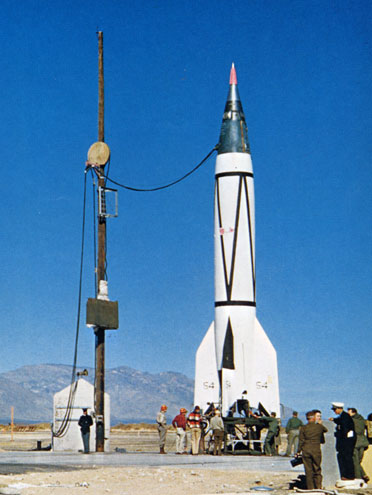
V-2 on the White Sands US test site
German developments on the "V-2", along with captured missiles and designers were used by the allies after the war. The United States got more missiles and chief designer Werner von Braun with most of the team, and after a short period of military tests the rocket was transferred to a scientific path. Curiously enough, back in 1946, the British Interplanetary Society proposed to make a rocket for human suborbital launches based on the V-2. This idea was rejected, but scientific instruments, seeds, insects and other living beings began to ascend into space dozens of times a year. Already on October 24, 1946, a rocket with an installed camera left the White Sands test site. Filmed film was automatically placed in a metal container, which withstood the impact of falling to the ground without a parachute. Humanity could see the Earth from a height of 105 km.
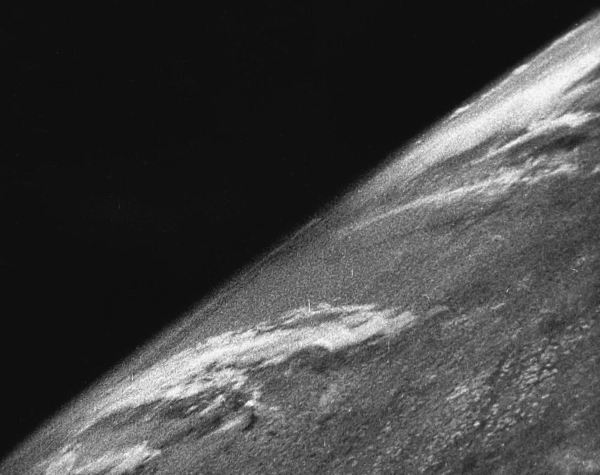
What is even more interesting, the camera took more than one photo, and took pictures with a frequency of 4 frames per second. And you can look accelerated by 6 times the view from the rocket (from 2:09).
February 20, 1947 Drosophila rose above the Karman line and successfully returned. And when on the V-2 in the Bumper project they put the second stage of the WAC-Corporal, it turned out to reach a record 393 km.
The USSR got less trophies and designers from the second echelon. Therefore, the first launch of the V-2 took place on October 18, 1947, and the R-1 adapted to its technology first flew on September 17, 1948. And in parallel with the deployment of combat, scientific launches of slightly modified missiles began with the addition of letters from A to E. Starting from They can be distinguished visually by two side containers with scientific equipment.
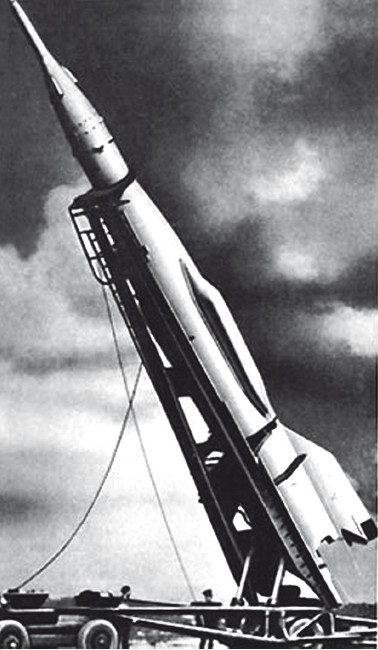
Archival photo
It was on R-1 in modification B that they first climbed into space and returned back alive on July 22, 1951, the Soviet dogs Dezik and Gypsies. In addition to animals, it was possible to raise scientific equipment and check equipment for future orbital flights. Geophysical rockets were tested by reflectors, a sodium comet for Luna-1 and -2, etc.
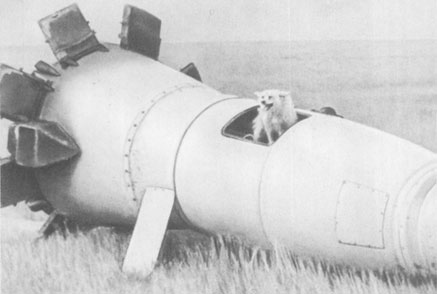
The head of the R-2A, archival photo
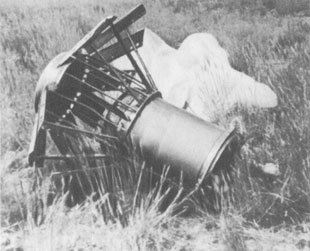
Container R-1D
The fifties and sixties of the 20th century can be called the golden era of geophysical rockets. First, combat ballistic missiles appear that can be adapted to suborbital launches. Then they create specialized missiles.
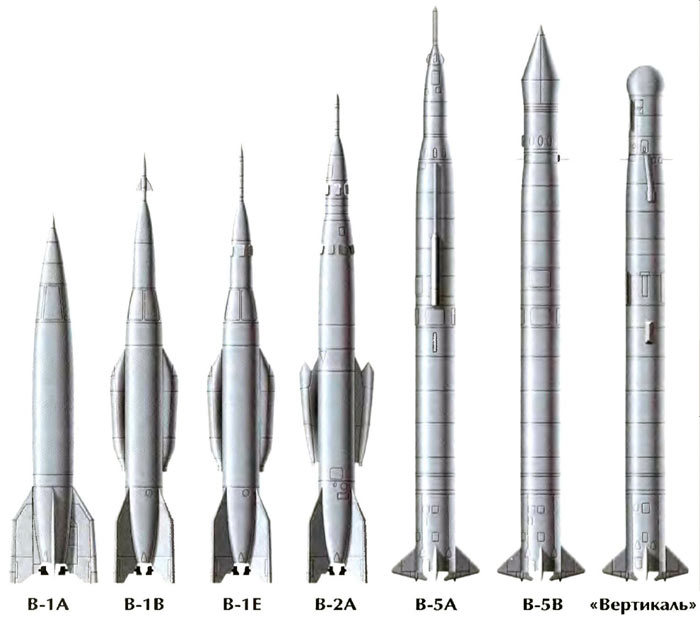
Soviet geophysical missiles
In the USSR, the basis was made of ballistic missiles R-2, R-5, R-11, R-14. The most powerful and load-lifting was the R-5 in versions AB, which could lift one and a half tons to an altitude of 400-500 km. In parallel, since 1951, a specially created meteorological rocket MP-1 began to be used, which could rise to an altitude of 90 km and featured original solutions such as direct measurement of air temperature in flight and a soft landing step on a parachute with reusability.
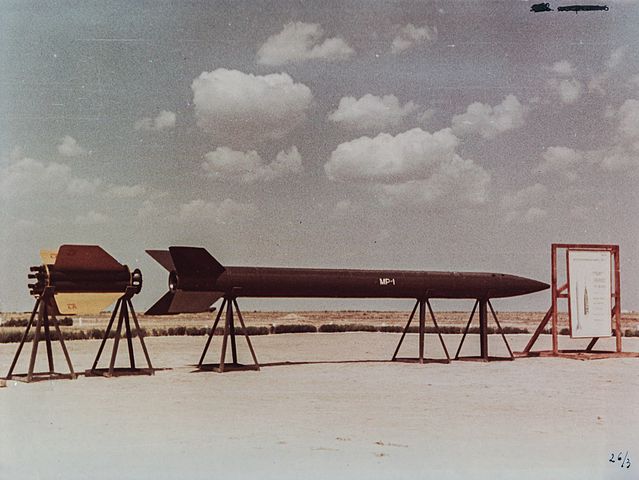
Missile MP-1
In the 1960s, the USSR implemented a program to create meteorological rockets with a maximum lifting height of 60 (MMP-06), 100 (M-100) and 180 (MP-12) kilometers and deployed a network of stations for rocket sounding of the atmosphere. These missiles still hold the record for the number of launches - the M-100 was launched more than 6,600 times, the MP-12 with modifications - more than 1,200 times.
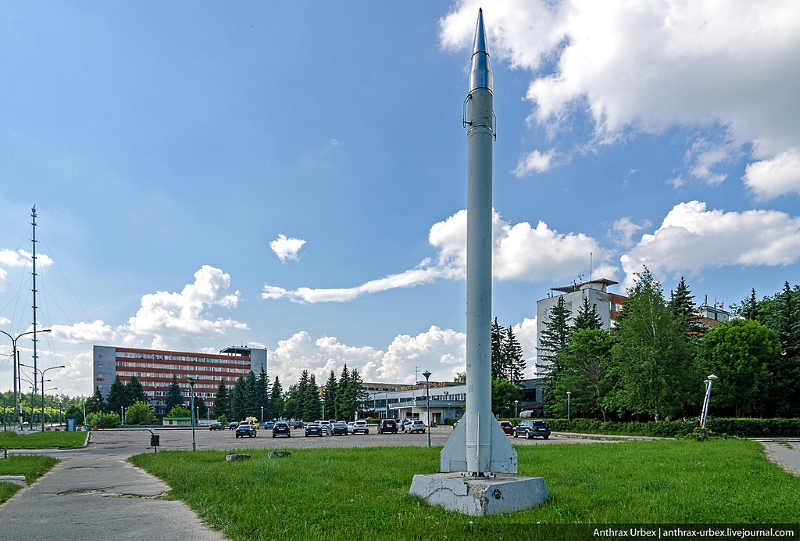
Monument MR-12 in Obninsk, photo anthrax_urbex.livejournal.com
A logical step after dogs would be a suborbital launch of a person. But in the USSR, the VR-190 project was closed, and, thanks to the payload of the R-7 rocket, a decision was made about orbital flight without intermediate steps. But in the USA, where the creation of an intercontinental ballistic missile was delayed, two suborbital launches were conducted with a man. On the basis of the Redstone battle rocket, spacecraft "Mercury" were launched with astronauts Alan Shepard and Virgil "Gus" Grissom, who climbed to 190 km.

Mercury-Redstone launch, NASA photo The
comparative simplicity of geophysical rockets led to the fact that they were also produced by countries that did not go into orbit on their own - Pakistan, Indonesia, Poland and others. The Canadian Black Brant family of rockets (> 800 launches since 1961) has become very successful and popular.
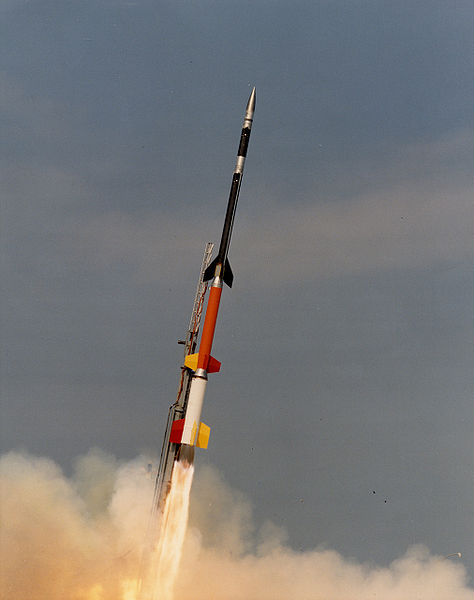
Start Black Brant, photo by NASA
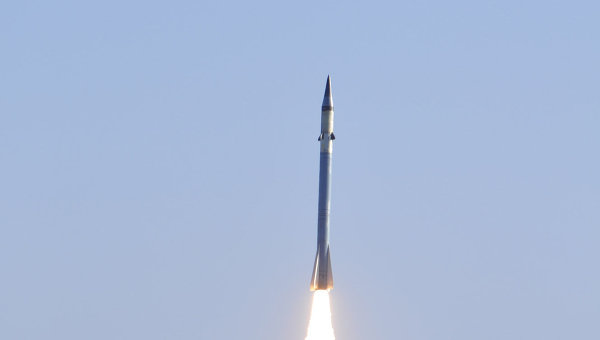
Starting the MR-30, photo by Dmitry Komar / RIA Novosti
In the 90s, the total number of suborbital launches in the world decreased - after the collapse of the USSR, Russia could not allocate comparable funds for the continuation of work. Rocket stations were closed or canned. The M-100 stopped flying in 1990, the MP-12 ceased to launch regularly in 1980, and the last two launches took place in 1997. But after a long break, the Russian meteorological rockets returned - in 2011 they conducted a successful test of the MP-30, capable of rising 300 km.
The growth in the number of private space companies in recent years has led to a marked increase in the number of carriers and launches. The usual Canadian Black Brant, Brazilian VSB-30, American Terrier, European MAXUS and the Japanese S-series were added to several players at once. Since 2006, Space Aerospace's SpaceLoft XL has been flying (it was GoPro that was put on its flight, which we have already watched 8 million times).
Most recently , the American SARGE (EXOS Airspace), the Chinese SQX-1Z (i-Space) and OS-X1 (OneSpace) have successfully flown . While unsuccessfully starts the Japanese Momo (Interstellar Technologies).
The rocket for suborbital tourism New Shepard is being successfully tested, the SpaceShipTwo suborbital space plane is breathing into its nape . At the end of the year, the first launch of the British Skyrora is expected.
Suborbital launches of geophysical rockets perform several important tasks at once:
So it comes as no surprise that private companies are finding customers for suborbital launches. With all the apparent frivolity, this is a good, useful, profitable and important thing, even if it remains in the shadow of orbital flights.

Soviet geophysical missiles R-2A and R-5A
By-effect

V-2, archival photo
On the border of space, the first object appeared in 1942, and this was a side effect of military tests. In a regular flight, the German combat ballistic missile "V-2" flew up to 320 km, while rising to an altitude of 80-100 km. And already at the first successful launch on October 3, 1942, the rocket reached an altitude of 85-90 km. The formal boundary of the cosmos, the Karman line, passes above, at the level of 100 km, but this is not a matter of principle - one can only climb such a height on a rocket. In addition, several times "V-2" launched vertically upwards. Theoretically, the fuel supply was enough to rise to about 200 km, and different sources cite the different heights achieved (175, 188 km) and different test dates (June 20, 1944, September 14, 1944).
Rokkit lootaz

V-2 on the White Sands US test site
German developments on the "V-2", along with captured missiles and designers were used by the allies after the war. The United States got more missiles and chief designer Werner von Braun with most of the team, and after a short period of military tests the rocket was transferred to a scientific path. Curiously enough, back in 1946, the British Interplanetary Society proposed to make a rocket for human suborbital launches based on the V-2. This idea was rejected, but scientific instruments, seeds, insects and other living beings began to ascend into space dozens of times a year. Already on October 24, 1946, a rocket with an installed camera left the White Sands test site. Filmed film was automatically placed in a metal container, which withstood the impact of falling to the ground without a parachute. Humanity could see the Earth from a height of 105 km.

What is even more interesting, the camera took more than one photo, and took pictures with a frequency of 4 frames per second. And you can look accelerated by 6 times the view from the rocket (from 2:09).
February 20, 1947 Drosophila rose above the Karman line and successfully returned. And when on the V-2 in the Bumper project they put the second stage of the WAC-Corporal, it turned out to reach a record 393 km.
The USSR got less trophies and designers from the second echelon. Therefore, the first launch of the V-2 took place on October 18, 1947, and the R-1 adapted to its technology first flew on September 17, 1948. And in parallel with the deployment of combat, scientific launches of slightly modified missiles began with the addition of letters from A to E. Starting from They can be distinguished visually by two side containers with scientific equipment.

Archival photo
It was on R-1 in modification B that they first climbed into space and returned back alive on July 22, 1951, the Soviet dogs Dezik and Gypsies. In addition to animals, it was possible to raise scientific equipment and check equipment for future orbital flights. Geophysical rockets were tested by reflectors, a sodium comet for Luna-1 and -2, etc.

The head of the R-2A, archival photo

Container R-1D
Golden era
The fifties and sixties of the 20th century can be called the golden era of geophysical rockets. First, combat ballistic missiles appear that can be adapted to suborbital launches. Then they create specialized missiles.

Soviet geophysical missiles
In the USSR, the basis was made of ballistic missiles R-2, R-5, R-11, R-14. The most powerful and load-lifting was the R-5 in versions AB, which could lift one and a half tons to an altitude of 400-500 km. In parallel, since 1951, a specially created meteorological rocket MP-1 began to be used, which could rise to an altitude of 90 km and featured original solutions such as direct measurement of air temperature in flight and a soft landing step on a parachute with reusability.

Missile MP-1
In the 1960s, the USSR implemented a program to create meteorological rockets with a maximum lifting height of 60 (MMP-06), 100 (M-100) and 180 (MP-12) kilometers and deployed a network of stations for rocket sounding of the atmosphere. These missiles still hold the record for the number of launches - the M-100 was launched more than 6,600 times, the MP-12 with modifications - more than 1,200 times.

Monument MR-12 in Obninsk, photo anthrax_urbex.livejournal.com
A logical step after dogs would be a suborbital launch of a person. But in the USSR, the VR-190 project was closed, and, thanks to the payload of the R-7 rocket, a decision was made about orbital flight without intermediate steps. But in the USA, where the creation of an intercontinental ballistic missile was delayed, two suborbital launches were conducted with a man. On the basis of the Redstone battle rocket, spacecraft "Mercury" were launched with astronauts Alan Shepard and Virgil "Gus" Grissom, who climbed to 190 km.

Mercury-Redstone launch, NASA photo The
comparative simplicity of geophysical rockets led to the fact that they were also produced by countries that did not go into orbit on their own - Pakistan, Indonesia, Poland and others. The Canadian Black Brant family of rockets (> 800 launches since 1961) has become very successful and popular.

Start Black Brant, photo by NASA
New Renaissance

Starting the MR-30, photo by Dmitry Komar / RIA Novosti
In the 90s, the total number of suborbital launches in the world decreased - after the collapse of the USSR, Russia could not allocate comparable funds for the continuation of work. Rocket stations were closed or canned. The M-100 stopped flying in 1990, the MP-12 ceased to launch regularly in 1980, and the last two launches took place in 1997. But after a long break, the Russian meteorological rockets returned - in 2011 they conducted a successful test of the MP-30, capable of rising 300 km.
The growth in the number of private space companies in recent years has led to a marked increase in the number of carriers and launches. The usual Canadian Black Brant, Brazilian VSB-30, American Terrier, European MAXUS and the Japanese S-series were added to several players at once. Since 2006, Space Aerospace's SpaceLoft XL has been flying (it was GoPro that was put on its flight, which we have already watched 8 million times).
Most recently , the American SARGE (EXOS Airspace), the Chinese SQX-1Z (i-Space) and OS-X1 (OneSpace) have successfully flown . While unsuccessfully starts the Japanese Momo (Interstellar Technologies).
The rocket for suborbital tourism New Shepard is being successfully tested, the SpaceShipTwo suborbital space plane is breathing into its nape . At the end of the year, the first launch of the British Skyrora is expected.
Conclusion
Suborbital launches of geophysical rockets perform several important tasks at once:
- There are scientific experiments that lack a few minutes of being in space and zero-gravity suborbital flight. This is the physics of microgravity, astronomy, the study of the atmosphere and others.
- You can work out technologies for space flight - devices, engines, even Martian landing devices.
- Suborbital rockets are noticeably simpler and cheaper than orbital rockets — you can learn from them and make the first, little money.
So it comes as no surprise that private companies are finding customers for suborbital launches. With all the apparent frivolity, this is a good, useful, profitable and important thing, even if it remains in the shadow of orbital flights.
